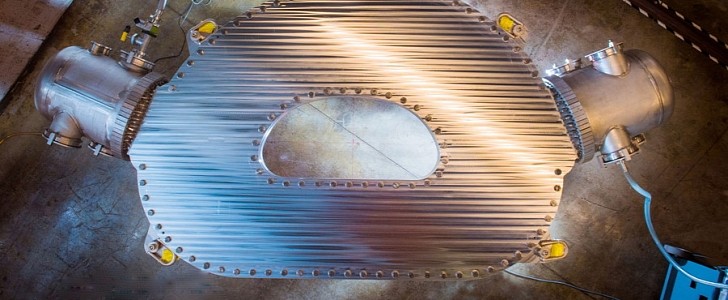The Massachusetts Institute of Technology (MIT) recently accomplished a fusion power-related demonstration that could radically transform energy production in the future. The superconducting electromagnet that was ramped up to the most powerful magnetic field of this kind to ever be created on Earth, is a huge step towards future fusion plants, which could soon be powering clean electric grids all over the world.
Together with the Commonwealth Fusion Systems (CFS) company, MIT is working on developing the world’s first fusion device that would be capable of producing more energy than it consumes. Called SPARC, this small-scale, demonstration device is the precursor of a full-scale commercial fusion power plant, ARC, which would revolutionize the energy industry.
Fusion power is seen as the best energy source, according to Maria Zuber, MIT’s vice president for research, because it can produce vast amounts of energy, and the only required fuel for it comes from water. Fusion power plants would be carbon-free, inexpensive solutions for inexhaustible sources of energy.
Fusion power research has been conducted for over a decade, and magnetic field devices have been created, but what makes this recent achievement a game-changer is the power versus size ratio, which makes commercial options viable.
After three years of development, MIT completed a first-of-its-kind superconducting magnet, composed of 16 plates stacked together. In fact, each of these plates would be the most powerful high-temperature superconducting magnet. During the recent demonstration, the large magnet was gradually powered up, until it reached 20 tesla – the most powerful magnetic field of this type ever achieved.
Developing this magnet was the biggest step needed in moving forward with SPARC. Fusion, which is the process that powers the sun, requires hot temperatures that cannot be tolerated by any solid material, which is why they need to be contained. Strong magnetic fields act as “an invisible bottle”, but conventional electromagnets are far too large to become feasible.
This groundbreaking magnet uses high-temperature, instead of low-temperature superconductors, able to create more intense magnetic fields, in a smaller space.
After reaching this milestone, MIT intends to complete the development of SPARC by 2025.
Fusion power is seen as the best energy source, according to Maria Zuber, MIT’s vice president for research, because it can produce vast amounts of energy, and the only required fuel for it comes from water. Fusion power plants would be carbon-free, inexpensive solutions for inexhaustible sources of energy.
Fusion power research has been conducted for over a decade, and magnetic field devices have been created, but what makes this recent achievement a game-changer is the power versus size ratio, which makes commercial options viable.
After three years of development, MIT completed a first-of-its-kind superconducting magnet, composed of 16 plates stacked together. In fact, each of these plates would be the most powerful high-temperature superconducting magnet. During the recent demonstration, the large magnet was gradually powered up, until it reached 20 tesla – the most powerful magnetic field of this type ever achieved.
Developing this magnet was the biggest step needed in moving forward with SPARC. Fusion, which is the process that powers the sun, requires hot temperatures that cannot be tolerated by any solid material, which is why they need to be contained. Strong magnetic fields act as “an invisible bottle”, but conventional electromagnets are far too large to become feasible.
This groundbreaking magnet uses high-temperature, instead of low-temperature superconductors, able to create more intense magnetic fields, in a smaller space.
After reaching this milestone, MIT intends to complete the development of SPARC by 2025.







